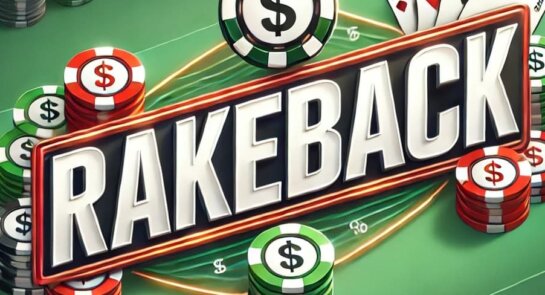Bankroll Management — VIP Grinders Guide

Why Bankroll Management Matters
Poker is a long game. Variance is real. Mismanaging your roll turns short-term variance into permanent ruin. A bankroll plan doesn’t make you a better decision-maker on a single hand — it keeps you in the game long enough for skill to win out.
Poker Bankroll Management Guidelines: Rule of Thumb
Use these as starting points — then adjust for your winrate, game type, rake, and emotional tolerance. Use our free Poker Bankroll Calculator to get a quick and accurate guide to which stakes you should be playing.
- Cash games (No-Limit): 20–100 full buy-ins depending on format and risk tolerance. Conservative grinders often use 50–100 buy-ins for online NLHE; live cash can often be played with fewer buy-ins but watch table choice and re-buy behavior.
- SNGs (6–10 players): 30–100 buy-ins depending on format and field size.
- MTTs: 100+ buy-ins for standard fields; consider 200–300+ buy-ins for very large-field MTTs because variance explodes.
- Micros/new players: Be extra conservative; variance and learning bleed stacks fast — err toward the high end of the ranges above.
Bankroll Quick Reference Table
| Format | Suggested Buy-ins (Conservative) | Suggested Buy-ins (Standard) | Suggested Buy-ins (Aggressive) | Notes |
|---|---|---|---|---|
| NL Cash (online, micro-stakes) | 100 BIs | 50 BIs | 25 BIs | Online has deeper fields & higher rake sensitivity — be conservative. |
| NL Cash (live/low rake) | 50–100 BIs | 30–50 BIs | 20–30 BIs | Live play often has better reads but allow for fewer BIs if game is soft. |
| Sit & Go (6–10 players) | 100 BIs | 50 BIs | 30 BIs | Field size & payout structure affect required BIs. |
| MTTs (regular fields) | 200 BIs | 100 BIs | 75 BIs | Large variance — the higher the field size, the more BIs you need. |
| MTTs (big fields/majors) | 300+ BIs | 200+ BIs | 100+ BIs | Consider satellite strategy; separate bankroll from cash. |
3 Key Bankroll Management Concepts: Practical, Not Theoretical
- Buy-ins vs. Bankroll: A buy-in is the cost to join one stake (e.g., $100 buy-in for $1/$2 if max buy-in is $100). Your bankroll is your total poker funds. Don’t have more than ~5% of your bankroll in play at once; tighter players use 2–3% to reduce risk.
- Rake & Game Selection: Higher rake reduces winrate and increases required buy-ins. Always factor rake when sizing bankroll requirements — heavy rake games demand larger cushions.
- ROI & Risk of Ruin: For tournament players, ROI and field size change required buy-ins. The lower your ROI and the larger the field size, the more buy-ins you need to reach an acceptable risk of ruin. Use simple models or calculators available on coaching sites to estimate.
VIP Grinders Practical Bankroll Scaling Plan Example
You’re playing online $0.50/$1 NL with $100 max buy-in (100bb):
- Conservative: 100 buy-ins → $10,000 bankroll
- Standard: 50 buy-ins → $5,000 bankroll
- Risky: 25 buy-ins → $2,500 bankroll (only for emotionally resilient, experienced winners)
MTT player targeting $10 buy-ins (average ROI ~10% in your hands): keep 100–200 buy-ins as the baseline; widen to 300+ for big-field grinders.
Adjust upward if you face high rake, tougher fields, or you plan to shot — adjust downward if you’re only playing as learning fun and accept higher variance.
Shot-Taking: How to Move Up (and Down) Stakes
Everyone wants to move up — do it with a plan.
6 point shot checklist to move up one level:
- Have X buy-ins for the new level (X = your chosen safety number).
- Winrate confirmation: positive EV at current level for at least 100–500 tracked hours/hands.
- Mental readiness: you can handle losing 3–10 buy-ins without tilt.
- Table selection plan: know where the soft games are at the new stake.
- Exit strategy: pre-commit to dropping back if down Y buy-ins (e.g., 5–10).
- Fail-safe move-down rule: if you lose 5–10 buy-ins at the new stake and can’t recover your mental game, drop down and reset. Don’t “ride the slide” hoping variance will fix itself.
Emotional and Practical Bankroll Rules
From my years at the online and offline tables, I’ve learned these simple but absolutely critical bankroll rules that keep my game strong both mentally and financially.
First, implement an auto-stop loss. I set a clear session loss limit—usually 2 to 3 buy-ins. Once I hit that number, I close my laptop and walk away. It prevents tilt and stops me from turning a tough day into a disastrous one.
Next, have a firm rebuy policy. If I find I’m rebuying big chunks of my bankroll too often in a week, I know it’s time to drop stakes and reset. This discipline protects me from chasing losses and keeps my bankroll sustainable.
I also swear by diversification. If I’m playing multiple formats like MTTs and cash games, I keep separate bankroll pools for each. Mixing them muddies your tracking and risks blowing through funds you’d reserved for a specific format.
Lastly—and this has changed my game—track everything. Every buy-in, cash-out, ROI, and hour played goes into my ledger. If you can’t measure it, you can’t manage it. Keeping meticulous records sharpens your decision-making and bankroll health.
Mastering these bankroll habits is as important as mastering your poker strategy. They keep you in the game longer and help keep your mind sharp when it counts.
Rakeback: The Underrated Bankroll Multiplier
A solid rakeback deal or cashback deal is more than a perk — it’s recurring income that meaningfully improves your bankroll dynamics. Rakeback reduces your effective costs of play, raises your net winrate, shrinks required buy-ins, and gives you a wider margin to absorb variance. Treat rakeback as a fiscally conservative part of your bankroll plan — not a crutch to play above your level.
Rakeback Bankroll Impact Hypothetical:
- Game: $0.50 / $1 NL cash (big blind = $1)
- Play volume: 10,000 hands / month
- Base winrate: 5 bb / 100 hands = $5 per 100 hands (since BB = $1)
- Monthly skill profit (S): 10,000 / 100 × $5 = $500
- Monthly rake paid (R): assume $300 (example; actual rake varies by site/format)
- Rakeback rate (r): 25% (fairly strong deal)
Compute:
- Rakeback RB = R × r = $300 × 0.25 = $75
- Net after rakeback = S − R + RB = $500 − $300 + $75 = $275
- No-rakeback net would be $200 ($500 − $300). With 25% rakeback, you earned $75 extra — a 37.5% lift on the net profit ($75 / $200).
- Bankroll impact (intuitive): That $75/month recurring addition either:
- Lowers the number of buy-ins you need to reach a target bankroll, or
- Lets you take disciplined, limited shots higher in stakes because you have extra margin.
- Always be explicit about the rake and rakeback you actually receive — numbers above are purely illustrative.
How to Fold Rakeback Into Your Bankroll Planning:
- Always calculate with conservative RB numbers. If your deal shows tiered rewards or delayed pay, use 50–75% of the advertised rate for planning.
- Treat RB as recurring income — not operating capital. Use it for: reinvestment (shot-taking), building a reserve, or smoothing withdrawals.
- Separate your RB pool. Keep rakeback receipts in a “buffer” account; allocate a fraction (e.g., 50%) towards bankroll growth and the rest as discretionary income.
- Use RB to shorten move-up cooldowns, not remove exit rules. If you plan to move up using RB as cushion, still set strict move-down triggers.
- Monitor effective rake vs. field softness. A good RB deal can’t salvage a terrible game; always pair rakeback with proper game selection.
Bankroll Tools, Drills & Resources
Over the years, I’ve found these tools and drills essential to managing my poker career effectively.
- Bankroll spreadsheet: Track every detail—income, expenses, bankroll, monthly deposits, and withdrawals. I update mine weekly. This keeps me honest about my real results and bankroll health.
- Risk calculators: Use spreadsheet models or online “risk of ruin” calculators tailored to your format—whether MTTs or cash games.
- Session review drill: After every losing session, I write down three key facts—is this tilt, strategic mistake, or both? Then two corrective actions to fix it. If tilt causes repeat losses, I stop playing and reset mentally before returning.
- Game selection audit: Monthly, I log rake rates, average pot sizes, and opponent tendencies to evaluate value. If I find tables or rooms with poor economics, I move to better spots—playing smart means maximizing every edge.
Common Bankroll Myths (Busted)
- “I only need 20 buy-ins.”
- That’s optimistic for most modern online games. 20 BIs might work for low-variance, high-winrate niche players — but most grinders use 40–100+ to sleep at night.
- “I’m a winner, so I can shot-take.”
- You can — but only with rules. Winning at a level doesn’t remove the tail risk. Variance impacts even the very best of the best. Keep a safety buffer.
Final VIP Grinders Pre-Session Checklist
| Question | Good Answer |
|---|---|
| Do I have target BIs for this stake? | Yes — (number recorded) |
| Can I afford session losses without tilt? | Yes — set session stop loss |
| Is rake acceptable for my ROI? | Yes — reviewed in game selection |
| Is there an exit rule if things go south? | Yes — precommitted move-down amount |
| Are bankrolls segregated (cash vs MTT)? | Yes |
Poker Bankroll Management FAQs
How many buy-ins should I have for cash games?
Aim for 50 buy-ins as a solid baseline for online NL cash; be more conservative (75–100) for tougher games or if you’re risk-averse.
How many buy-ins for MTTs?
Keep 100–200 buy-ins for standard MTT work and push toward 300+ for huge-field events to control variance.
What about Sit & Gos (SNGs)?
Carry 30–100 buy-ins depending on SNG size and format, with larger fields demanding the higher end.
When is it OK to move up in stakes?
Move up only after you meet your BI threshold for the new level, show a consistent winrate sample, and pass a mental-readiness check.
When should I move down?
Move down immediately if you hit your pre-set loss trigger (e.g., 5–10 buy-ins) or if tilt undermines your decisions.
Can I use rakeback to justify moving up?
Use rakeback as a supplementary cushion, not the main reason to move up — keep the same performance and exit rules regardless.
How large should my session stop-loss be?
Set a session stop-loss of 2–3 buy-ins for cash games to prevent tilt-driven catastrophes.
Should I mix cash and tournament bankrolls?
No — segregate bankrolls for cash, MTTs, and SNGs so variance in one format doesn’t wreck your other play.
How many rebuys before I should drop stakes?
If you’re rebuying more than 10–15% of your bankroll in a short period, drop stakes and reassess.
How do I handle staking or backing arrangements?
Treat staking as a formal business deal: get terms in writing, track results transparently, and never overcommit your personal roll based on promises.

















